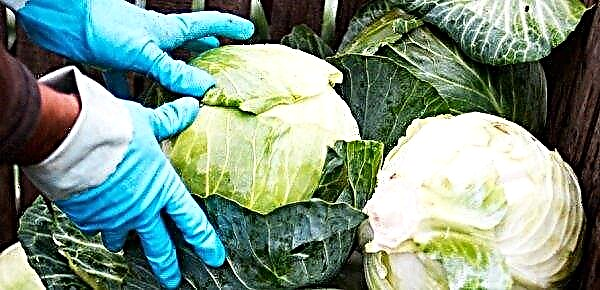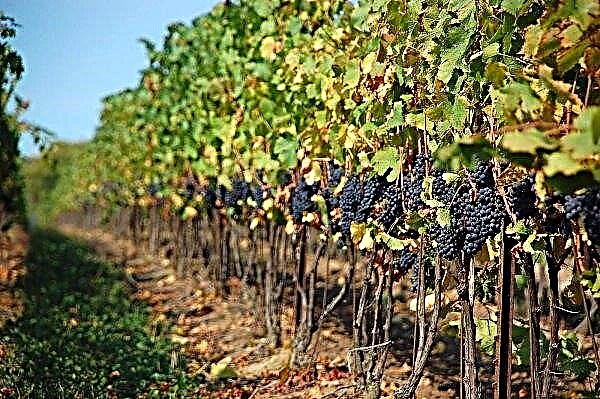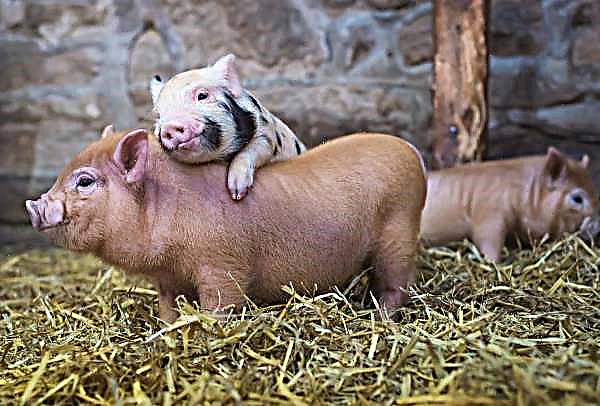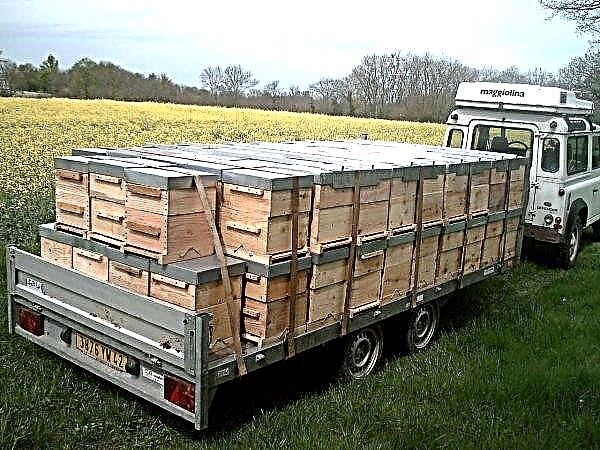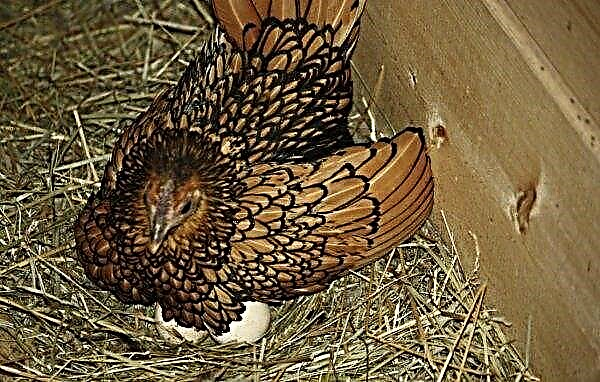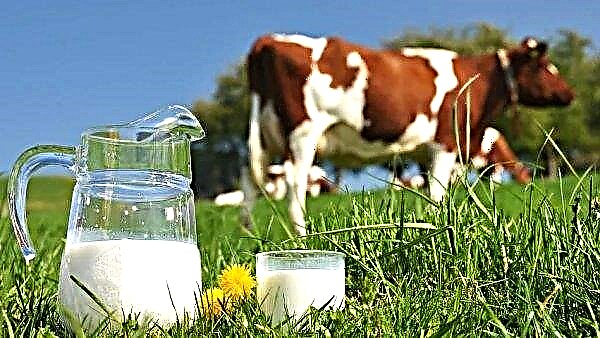Many mushroom pickers know and with pleasure collect butter. One of the species widespread in our latitudes is a granular or Latin species, suillus granulatus, which will be discussed in the article.
Description
The people also call the mushroom a summer or early oiler. The hat from 2 to 20 cm in diameter may be convex or more flat rounded. The surface is painted red-brown, but acquires more ocher as it grows. The mucous membrane, but does not seem sticky to the touch, is easily separated from the pulp. At the bottom of the cap is a thin, tubular, light yellow layer in young and gray-yellow in old specimens. The rounded pores of short tubes (up to 1 cm in length) secrete milk. The structure of the pulp is dense, elastic, whitish.
The leg is integral in the form of a cylinder, in diameter up to 2 cm, height up to 8 cm. The surface is smooth, the ring is absent, painted pale yellow, with age brown at the base. The mushroom got its name because of the small nodules on the body of the leg, resembling the shape and structure of semolina, which is clearly visible in the photo.
Did you know? Mushroom protein is very close in content to animal proteins, and the mineral and carbohydrate composition is close to plants. Because of this, until the 60th year of the last century, scientists argued about the belonging of mushrooms to flora or fauna, until they were isolated in a separate kingdom.
Doubles
The family is large, the above mushroom has twins and similar species. Among the most common:
- redhead - the hat is sticky, of a brick hue, with a yellow leg, on which there may be remnants of a growth of a warty or filmy type;

- ordinary or non-ringed - the hat is brown in color, the leg has a weakly pronounced ring from the protective shell, the color is white and pink;

- cedar oil - the name comes from the place of growth, differs in a convex, fleshy hat, which with age becomes like a pillow. The surface is brown, mucous with an almond flavor unusual for mushrooms.

- white - named after the color of the hat, over time it becomes gray with a yellow tint. If there is a lot of moisture in the place of growth, the surface turns green;
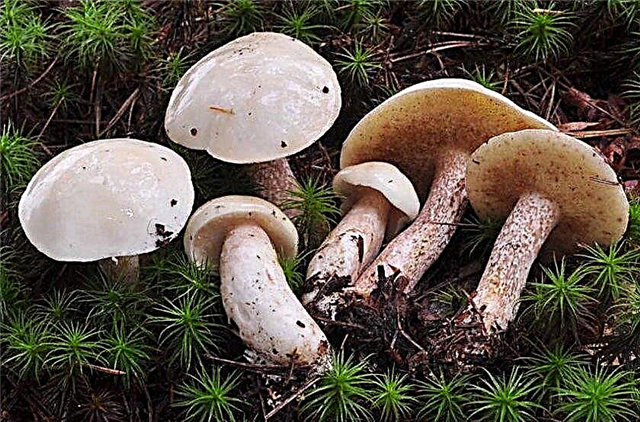
- oily nipple - the hat is yellow-brown. It does not reach large sizes, unlike other species. On the leg is a pronounced ring from a preserved shell. This mushroom is conditionally edible, it must be able to cook.

Where and at what time it grows
Grain oiler is distributed throughout Europe, almost throughout Russia, in the North Caucasus. The species loves coniferous forests, undergrowth and young plantings, clearings. Most often it can be found under pine trees, in groups or singly.
Mushrooms appear in late June, on average, the fruiting period lasts about one and a half months. However, under favorable conditions, it can significantly stretch, for example, in the southern regions of Russia it is collected until November.
Important! It is advisable to collect oil in gloves, since the juice they secrete freezes on the skin and is difficult to wash off.
Edible, palatability
Early butterdish is not just edible, it is one of the most delicious in its family. The elastic flesh has a pleasant aroma with subtle fruity notes, and its meatiness makes it possible to cook in many ways. The white color does not change at the cut, and the delicate taste with a slight sourness gives reason to rank the species in the second category of edibility. Moreover, due to the rich chemical composition, it is considered delicious and even healing.

Cooking methods
Before talking about cooking methods, it should be mentioned that first you need to remove the skin from the hat, otherwise the dish will be bitter.
Oil is prepared by various methods:
- fried;
- stew;
- boiled in soup;
- bake with vegetables, meat, fish;
- salt;
- pickle.
The product goes well with cereals, meat and poultry, seafood and vegetables, pasta. Mushroom sauce, julienne, stuffed hats, cream soup are popular in many cuisines. In addition, the product can be dried or frozen, the taste is not lost, and the vitamin composition is preserved.
Did you know? Mushrooms are approximately 400 million years older than dinosaurs. They are incredibly tenacious: they survive under high radiation, in the airless space of space, in and under water.
Useful properties of the mushroom
Mycologists from many countries have studied fungi and found the presence of natural antibiotics and substances in the edible species that stimulate the immune system to produce antibodies.
In addition, the edible body of the oiler contains:
- vitamins - B2, B5, C;
- minerals - zinc, copper, selenium, chromium;
- a protein consisting of valuable amino acids;
- lecithin;
- omega-6;
- pitches.

- This fact was adopted by pharmacists and with the addition of mushroom extracts today they are preparing medicines for the treatment of:
- metabolic disorders and water-salt metabolism;
- cardiovascular ailments;
- central nervous system problems;
- depressive state;
- chronic fatigue;
- reproductive system dysfunctions.
Butterflies have the ability to remove excess fluid and salt from the body, which relieves pain symptoms in diseases of the joints, reduces swelling of the arms and legs. Regular use will restore the hormonal background, will prevent PMS in women and impotence in men.
Important! Pediatricians do not recommend giving mushrooms to children under 10 years of age, since until this age the digestive system is not able to absorb such food.
The protein in the product is a building material for cells and tissues, restores the energy balance of the body. Lecithin removes harmful cholesterol, has an analgesic effect, accelerates cell regeneration.
Vitamin C has a favorable, stimulating effect on the body's defenses. The inclusion of the product in the diet during seasonal diseases will significantly reduce the risk of their occurrence.

Contraindications and possible damage
It is not advisable to eat butter, especially salted or pickled pregnant women: Food is considered heavy, and excess salt can lead to renal colic.
Mushrooms collected near industrial plants or highways can cause serious poisoning due to the toxic substances that they absorb.
- Use in conditions is contraindicated:
- gastritis, pancreatitis (exacerbation);
- gastrointestinal ulcers in acute form;
- liver disease;
- lactation period;
- renal failure.
Knowing the detailed description of a granular oiler, lovers of collecting and eating this product will not confuse it with other species. The regular inclusion of mushroom dishes in the diet diversifies it and has a beneficial effect on the body.






